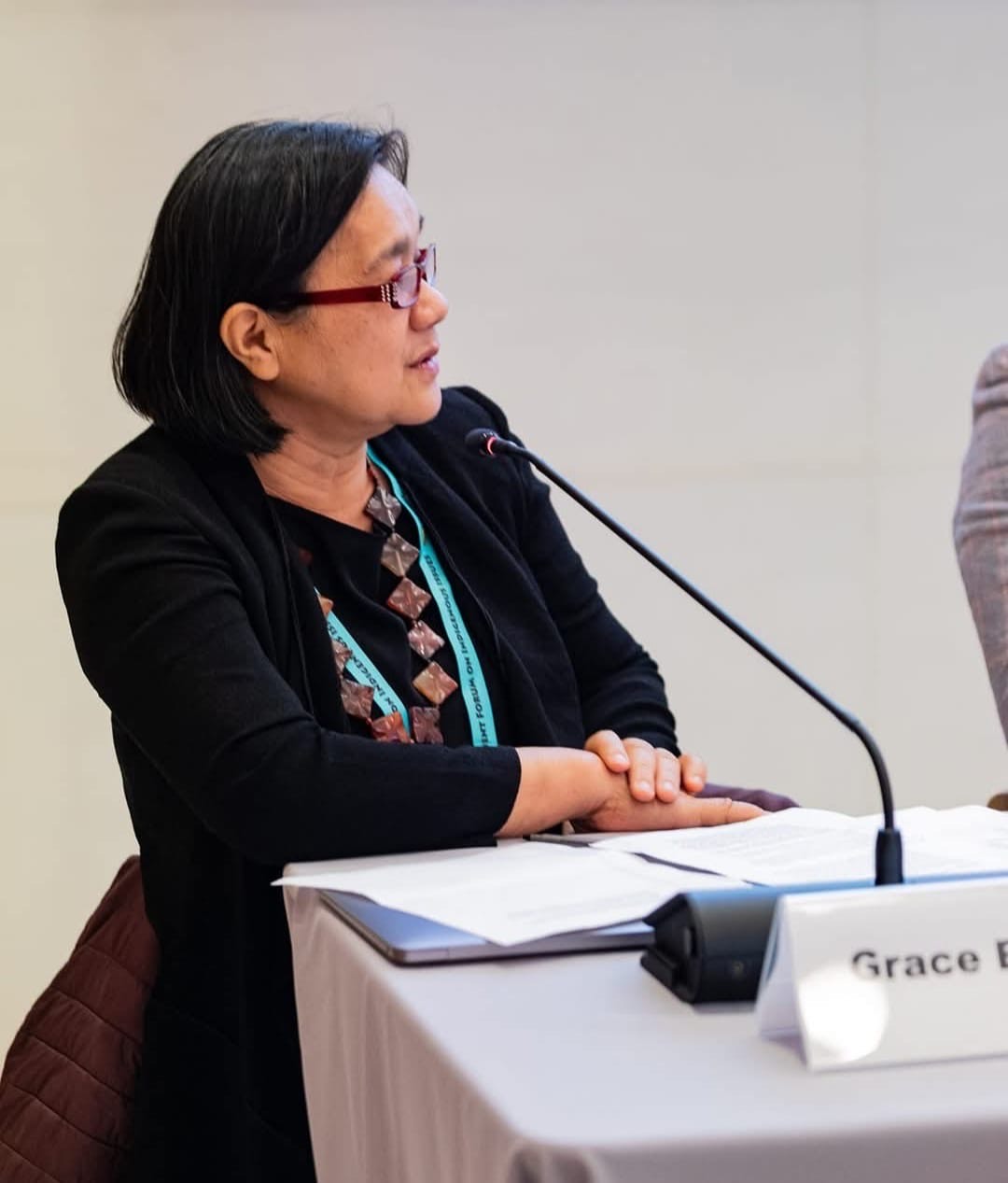Growing up in a forest-rich village in Mountain Province, Philippines, Grace Balawag learned from an early age about the importance of seeking knowledge from elders and bringing communities together to achieve the best results. This mindset shaped both her advocacy and conservation work in the following decades.
Part of the Kankanaey-Igorot Indigenous people, as a child Balawag was taught the significance of protecting the surrounding nature that her people’s culture and livelihoods rely on - through knowledge passed on by fellow villagers or from teachers at her Indigenous-led school.
“In my younger days when I was still learning, we had our elders who taught us our values and about our sustainable agriculture practices. That’s how I started,” she said, speaking ahead of International Women’s Day (IWD) on 8 March.
“But we always worked together collectively too – be it with farming or on community action. There were deforestation threats from mining and hydroelectric dams, and we always came together to strongly oppose these developments,” she added.
The theme for this year’s IWD is “Rights. Equality. Empowerment” and Balawag is one of several women leaders working on REDD+ who are demonstrating what it takes to achieve progress in addressing systemic barriers and biases that women face and promoting gender equality and women’s empowerment within their forest conservation work.
Balawag, who enrolled on a community development and social work course at college after graduating from school, now works for organizations with clear policies and programmes for empowering Indigenous women.
Currently the assistant coordinator for the climate and biodiversity programme at Tebtebba (Indigenous Peoples’ International Centre for Policy Research and Education), she has still encountered many challenges working in conservation and for Indigenous People’s rights, which is still very much male-dominated.

“In most countries across Asia there is no legal recognition of Indigenous People, not to mention Indigenous women,” she said. “So, we conduct capacity building activities at the national, regional and community level.”
“The challenge of discrimination against Indigenous Peoples, as well as Indigenous women, is still very much present in communities and countries where we conduct trainings. This is the usual mindset in many agricultural societies,” she said, adding that men are still the main decision-makers.
“But we are always very clear on how to engage Indigenous women in conservation processes, including REDD+,” said Balawag, who also plays a key role in organizing the Asia Indigenous Women Network (AIWN).
“All of our partners are required to have gender-related priorities.”
Balawag has helped conduct research on benefit-sharing for Indigenous women in REDD+ jurisdictional areas as well as develop case studies on how they have been participating or involved in the UN-REDD Programme.
Together with other Indigenous Peoples’ Organizations (IPOs) networks and partners, Balawag actively engages with local, national to global processes and knowledge sharing platforms on climate change, biodiversity and sustainable development - including REDD+, where she served as one of the IPO observers to the UN-REDD Board.
She is also one of the Co-Chairs of the International Indigenous Peoples Forum on Climate Change (IIPFCC), the IPO constituency under the UNFCCC.
The world's forests have come under threat in recent decades due to clearing for logging and agriculture – including crops like palm oil and soybeans, as well as livestock grazing, pulp and paper expansion, mining, infrastructure and urbanization.
In 2020, Balawag’s Mountain Province had 174,000 hectares of natural forest, covering 82 per cent of its land, according to Global Forest Watch, but in 2023, it lost 341 hectares of natural forest, equivalent to 181 kilotons of CO₂ emissions.
Approximately 70 million Indigenous People are long-time dwellers and curators of vast expanses of forests across the world, according to the UN-REDD Programme. They also manage around 25 percent of the world’s land, which contains much of the planet’s biodiversity and the carbon stored in soil and biomass.
Indigenous People play a vital role in forest protection, due to their traditional knowledge and sustainable management of their lands, yet they receive less than 1 per cent of global climate aid, according to the Rainforest Foundation Norway.
The UN-REDD Programme for forest protection, has put in place safeguards to ensure Indigenous Peoples and local communities, including equitably women and men within them, are involved in the decision-making processes, while their rights are protected. All are a vital component for results-based payments for emissions reductions.

Balawag said she is also seeing gradual positive changes happening for women around REDD+ through gender action plans and programmes targeting women that are being enforced or implemented at local and national levels.
“In our communities, women are mostly the knowledge holders in relation to conservation – they are the ones getting medicinal and edible plants from forests or doing agriculture production for their families,” Balawag said.
She added that the so-called “Forest COP” in Belem, Brazil later this year will be an important opportunity too for both forests, forest funding and recognizing the crucial role Indigenous Peoples, and particularly Indigenous women play in conservation around the world.




